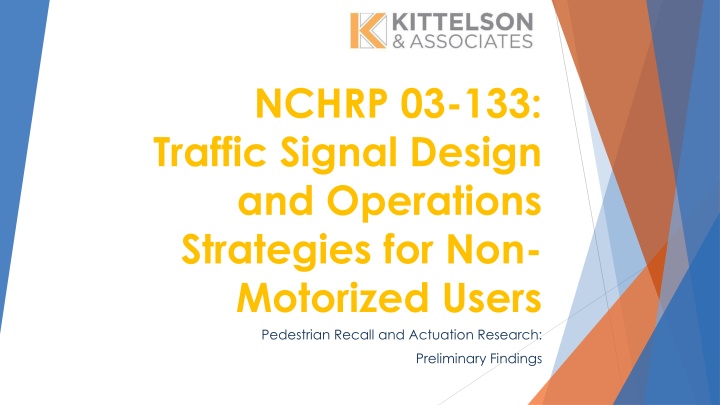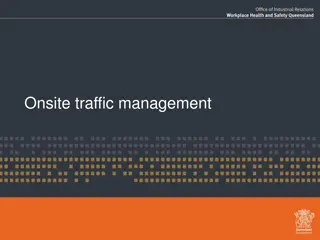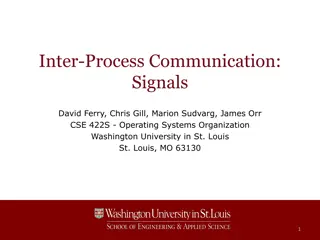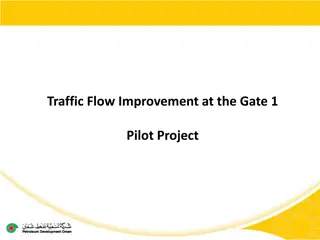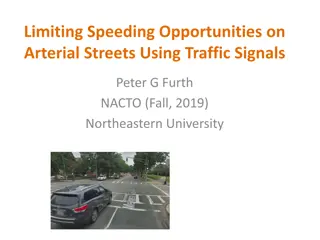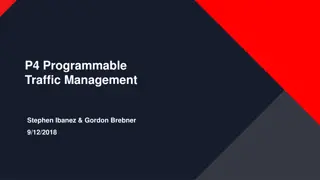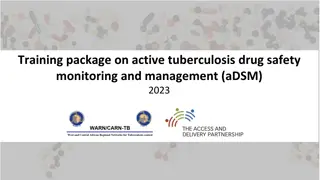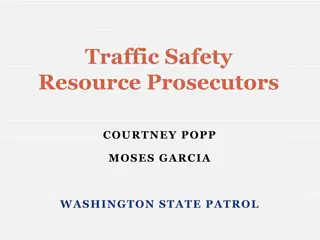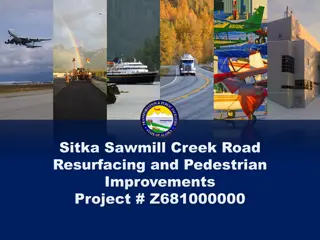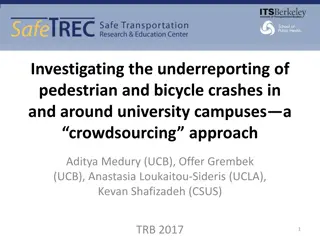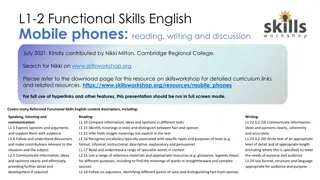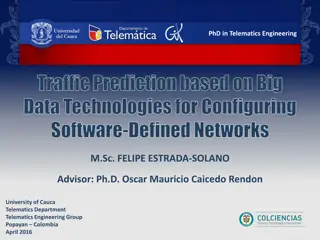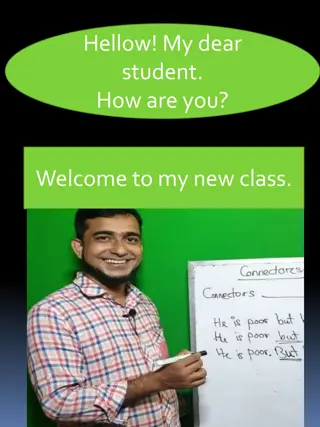Enhancing Traffic Signal Design for Pedestrian Safety
The research focuses on developing strategies to improve traffic signal functionality for pedestrians and cyclists. It explores the impact of pedestrian recall and actuation on traffic operations and safety, investigating factors such as pedestrian volume thresholds. Using microsimulation models on a real arterial in Virginia, the study examines the implications of implementing pedestrian recall phases. Preliminary findings underscore the importance of balancing operational efficiency with pedestrian safety in signal design.
Download Presentation

Please find below an Image/Link to download the presentation.
The content on the website is provided AS IS for your information and personal use only. It may not be sold, licensed, or shared on other websites without obtaining consent from the author.If you encounter any issues during the download, it is possible that the publisher has removed the file from their server.
You are allowed to download the files provided on this website for personal or commercial use, subject to the condition that they are used lawfully. All files are the property of their respective owners.
The content on the website is provided AS IS for your information and personal use only. It may not be sold, licensed, or shared on other websites without obtaining consent from the author.
E N D
Presentation Transcript
NCHRP 03-133: Traffic Signal Design and Operations Strategies for Non- Motorized Users Pedestrian Recall and Actuation Research: Preliminary Findings
NCHRP 03-133: Traffic Signal Design and Operations Strategies for Non-Motorized Users Develop toolbox of strategies and treatments to make traffic signals work better for peds/bikes
Pedestrian Recall and Actuation Research: Preliminary Findings
Pedestrian Recall vs. Pushbutton Actuation Research Need Vehicle Green Time Need Pedestrian Volume Decision Pedestrian volume Short Medium Long Low Low Actuation Actuation ? Recall Medium High High ? Recall Recall ? Recall Recall Recall Medium ? Decision involves a tradeoff between Impact on operations (traffic delay, capacity, progression, cycle length) Impact on pedestrians (delay, compliance/safety)
Research Questions When would there be a small traffic impact of putting ped phases on recall? Is there a ped volume threshold to set ped phases on recall? How is it different for peds crossing major street or side street?
Research Methodology: Base Model Microsimulation on a real arterial in Virginia (Route 1) Coordinated-actuated arterial with 110 seconds cycle length Focusing on a single (test) intersection that is non- critical (i.e., has slack capacity) Modeled both peds crossing main arterial and side street Recall was tested only for peds crossing main arterial (7 sec of Walk and 20 sec of FDW) Crosswalk across side street was set to Rest in Walk
Research Methodology: Scenario Testing and Variables Probability of pedestrian demand in a given cycle (denoted as PP ) Side street vehicle green time required as a fraction of Min Ped Green time required (denoted as SSG ) 0.5 0.1 (4 peds/hr) 0.3 (12 peds/hr) 0.6 0.5 (24 peds/hr) 0.7 0.7 (42 peds/hr) 0.85 0.9 (80 peds/hr) 1.0 1.2
Preliminary Results: Delay Change for Peds Crossing the Main Arterial 0.0 With small PP, delay change is nearly equal to Walk time -1.0 -2.0 Delay Change (sec) -3.0 With high PP, almost no change since ped actuation functions like a recall -4.0 -5.0 -6.0 -7.0 -8.0 0.0 0.1 0.2 0.3 0.4 0.5 0.6 0.7 0.8 0.9 1.0 Pedestrian Probability (PP)
Preliminary Results: Delay Change for Peds Crossing the Side Street 8.0 SSG=0.5, PP=0.1 Scenario SSG=0.5 With high SSG, regardless of ped volume, impact is small 7.0 SSG=0.6 Peds Crossing Main Arterial Peds Crossing Side Street 6.0 SSG=0.7 Delay Change (sec) SSG=0.85 -7 seconds 59 seconds to 52 seconds +5 seconds 8 seconds to 13 seconds 5.0 SSG=1.0 4.0 SSG=1.2 3.0 2.0 1.0 0.0 0.0 0.1 0.2 0.3 0.4 0.5 0.6 0.7 0.8 0.9 1.0 Pedestrian Probability (PP)
Preliminary Results: Intersection Vehicle Delay With low PP and SSG, more pronounced impact but still less than 3 seconds 8.0 SSG=0.5 7.0 SSG=0.6 With high SSG, almost no impact on intersection delay 6.0 SSG=0.7 Delay Change (sec) 5.0 SSG=0.85 SSG=1.0 4.0 SSG=1.2 3.0 2.0 1.0 0.0 -1.0 0.0 0.1 0.2 0.3 0.4 0.5 0.6 0.7 0.8 0.9 1.0 Pedestrian Probability (PP)
Preliminary Results: Side Street Phase Green Time Distribution About 80% of the time, vehicle phase requires less than min ped green Ped Green Minimum Only about 20% of the time, vehicle phase requires less than min ped green
Key Findings High pedestrian demand: Pedestrian recall is appropriate and has no impact on intersection delay Long side street vehicular phase green time required: Regardless of pedestrian demand, pedestrian recall will reduce pedestrian delay with almost no impact on intersection delay Low pedestrian volumes: Pedestrian recall will reduce ped delay by about the same duration of the Walk interval.
